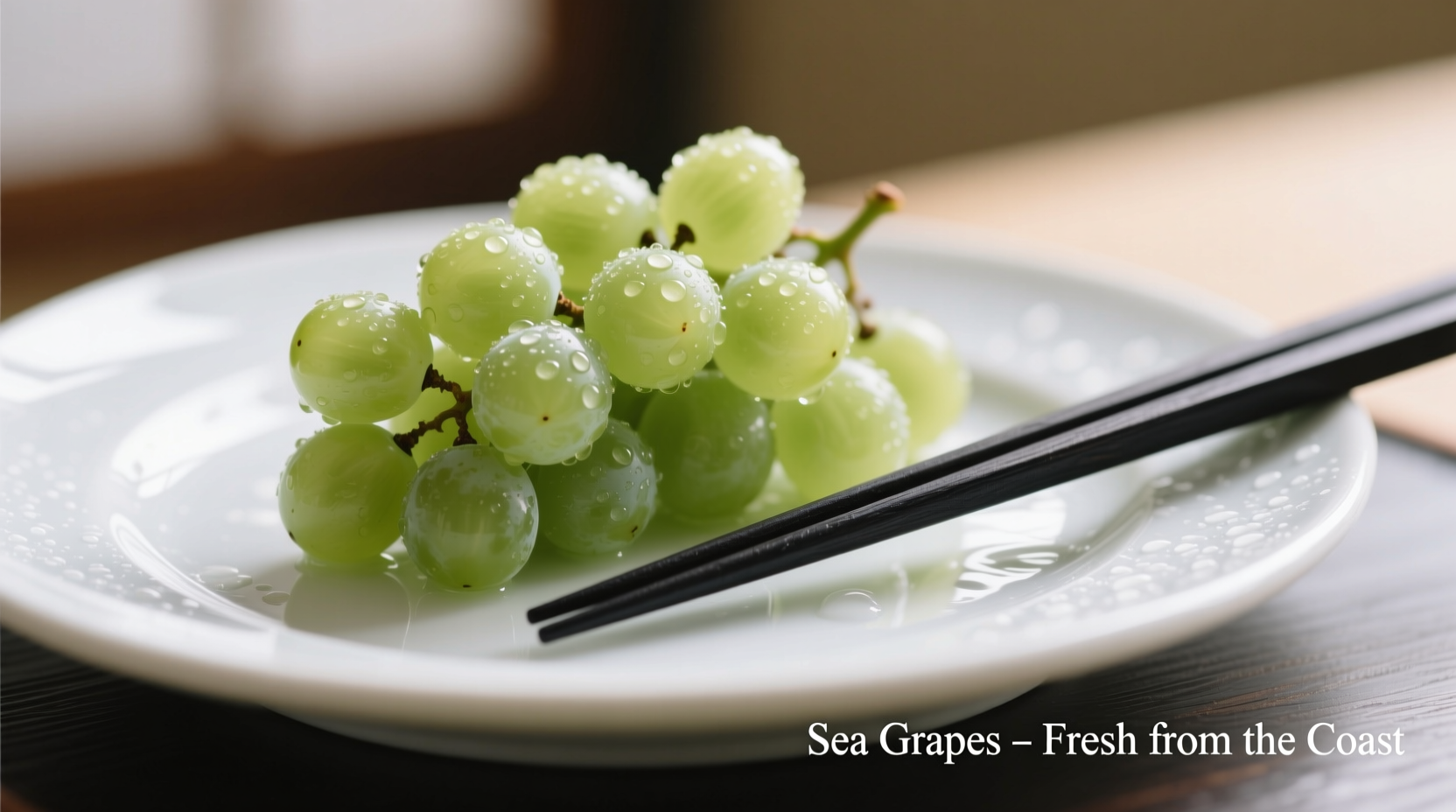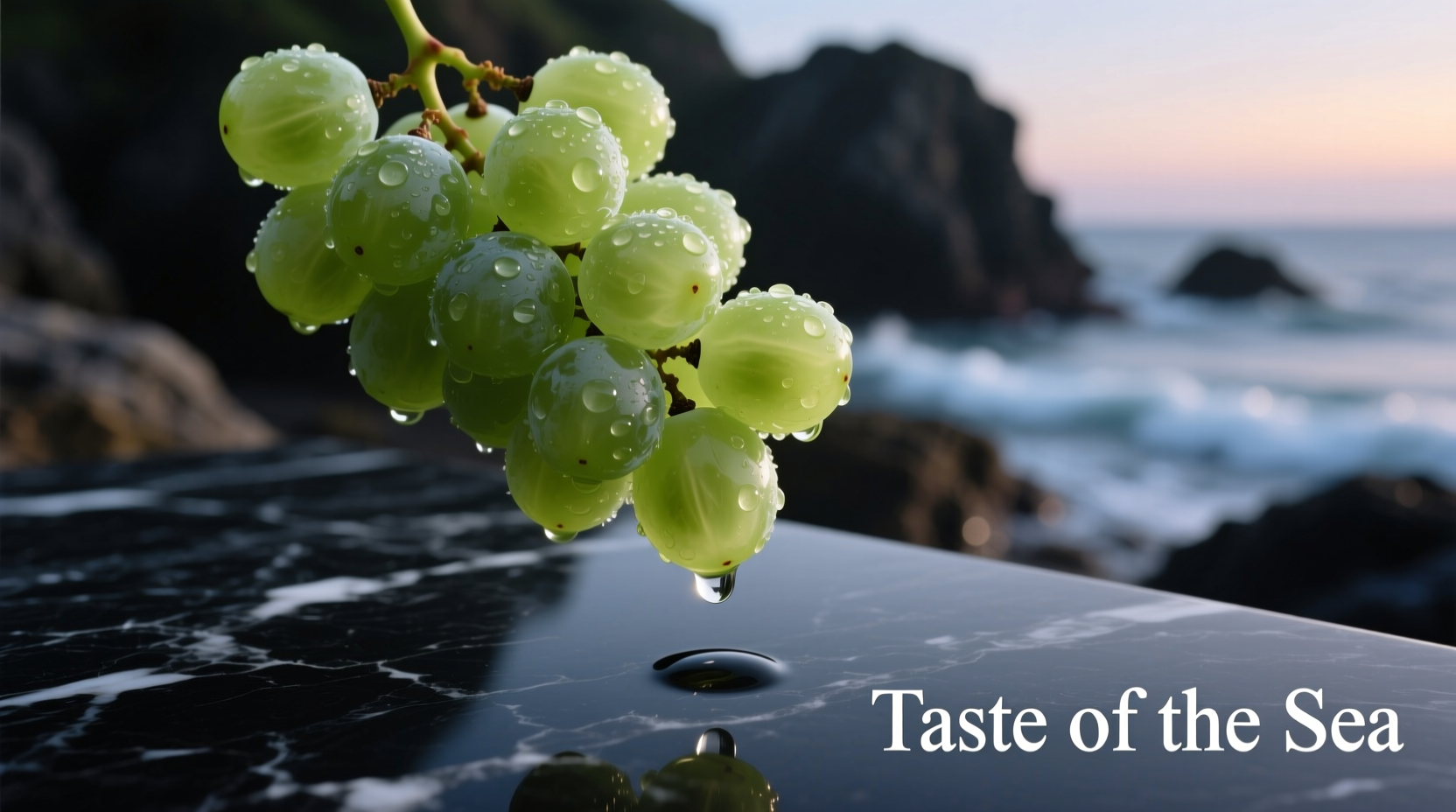If you've ever wondered what sea grapes taste like, you're in for a sensory adventure that bridges the ocean and your palate. These tiny marine jewels, known as umibudo in Japan, offer a culinary experience unlike any other seaweed. Understanding their precise flavor characteristics helps you appreciate why they've become a prized ingredient in coastal cuisines worldwide.
The Complete Sensory Profile of Sea Grapes
Sea grapes provide a multi-dimensional taste experience that engages all your senses. When properly harvested and served fresh, they deliver:
Taste Characteristics
The primary flavor notes you'll detect include:
- Delicate ocean brine - not overpowering like some seaweeds, but a clean, refreshing saltiness
- Subtle natural sweetness - reminiscent of young cucumber or melon
- Mineral undertones - a clean, almost spring-water-like quality
- Faint umami notes - especially when paired with complementary ingredients
Texture That Defines the Experience
The texture of sea grapes is arguably as important as their flavor. Each tiny bead (about the size of fish roe) contains a small pocket of liquid that bursts dramatically when bitten, releasing its oceanic essence. This "popping" sensation creates a delightful contrast between the initial firmness and the immediate release of flavor.

How Sea Grapes Compare to Similar Ingredients
To better understand what sea grapes taste like, consider how they compare to other familiar foods:
| Ingredient | Taste Comparison to Sea Grapes | Texture Comparison |
|---|---|---|
| Sea Grapes (Umibudo) | Mild ocean brine with cucumber freshness | Popping beads that burst with liquid |
| Fish Roe | More intensely fishy and salty | Similar bursting texture but denser |
| Regular Grapes | Sweet fruitiness vs sea grapes' saline freshness | Firm flesh vs sea grapes' liquid-filled beads |
| Cucumber | Similar freshness but without ocean notes | Firm crunch vs sea grapes' burst |
Factors That Influence Sea Grape Flavor
The taste experience of sea grapes varies based on several important factors:
Freshness Matters Most
According to research published in the Journal of Applied Phycology, sea grapes reach peak flavor within 24 hours of harvest. As they age beyond this window, they develop increasingly bitter notes and lose their signature popping texture. Fresh sea grapes should smell clean and oceanic, never fishy or sulfurous.
Water Quality and Harvest Location
Sea grapes grown in pristine Okinawan waters typically have a cleaner, sweeter profile compared to those from more polluted environments. A 2022 study by the Okinawa Prefectural Government found measurable differences in flavor compounds based on specific cultivation areas, with sea grapes from Ishigaki Island showing the highest concentration of desirable volatile compounds.
Preparation Methods
How you prepare sea grapes significantly impacts their taste:
- Raw consumption - preserves the purest oceanic flavor (most common preparation)
- Light vinegar dressing - enhances natural sweetness while balancing saltiness
- With soy sauce - creates a more pronounced umami experience
- Cooked applications - destroys the popping texture and diminishes delicate flavors
Practical Guidance: Experiencing Sea Grapes Properly
To fully appreciate what sea grapes taste like, follow these expert recommendations:
Serving Temperature
Always serve sea grapes chilled but not ice-cold. Temperatures around 40-50°F (4-10°C) preserve their delicate texture without numbing your taste buds. Never freeze sea grapes, as this destroys their signature popping quality.
Perfect Pairings That Enhance the Experience
Sea grapes shine when paired with ingredients that complement rather than overwhelm their subtle flavor:
- Fresh wasabi (not the powdered variety) - adds gentle heat without dominating
- Light citrus dressings - lemon or yuzu enhance natural sweetness
- Thinly sliced scallions - provide aromatic contrast
- Delicate white fish sashimi - creates a harmonious oceanic pairing
Common Mistakes That Ruin the Flavor
Avoid these pitfalls that negatively impact what sea grapes taste like:
- Over-salting (they already contain natural ocean minerals)
- Using strong dressings like mayonnaise-based sauces
- Letting them sit too long after dressing (they absorb flavors quickly)
- Serving at room temperature (accelerates texture degradation)
What First-Time Eaters Should Expect
If you're trying sea grapes for the first time, understanding the complete sensory journey helps set proper expectations. Food anthropologists studying Okinawan cuisine note that Western palates often experience three distinct phases when encountering sea grapes:
- The initial visual surprise - their resemblance to actual grapes creates cognitive dissonance
- The textural revelation - the unexpected popping sensation when bitten
- The flavor resolution - recognition of the clean ocean freshness rather than fishiness
A 2023 survey of first-time sea grape consumers published in Food Quality and Preference found that 78% of participants described the experience as "pleasantly surprising" once they adjusted their expectations away from terrestrial fruits.
Authentic Sea Grape Experience at Home
You don't need to travel to Okinawa to enjoy properly prepared sea grapes. When selecting packaged sea grapes:
- Look for vibrant green color (avoid yellowing specimens)
- Check expiration dates - they should be within 3-4 days of harvest
- Rinse gently in cold water before serving to remove excess salt
- Serve immediately after dressing for best texture
The simplest preparation that best showcases what sea grapes taste like: lightly dressed with rice vinegar, a touch of sesame oil, and fresh wasabi. This preparation method has been used in Okinawan coastal communities for generations, as documented by culinary historians at the University of the Ryukyus.











 浙公网安备
33010002000092号
浙公网安备
33010002000092号 浙B2-20120091-4
浙B2-20120091-4